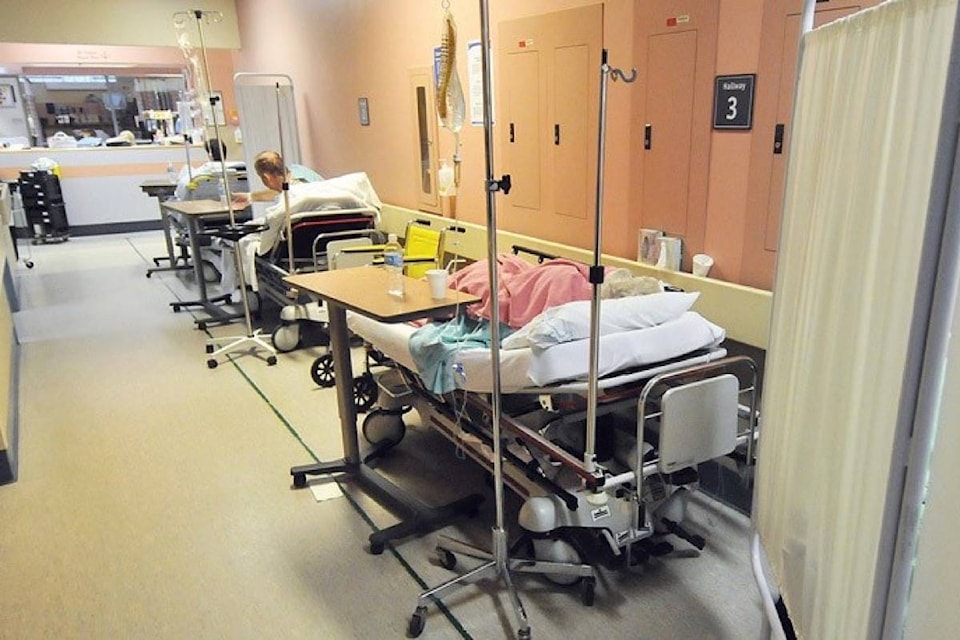Some residents have been prescribed VAC (vacuum-assisted closure) therapy at the hospital in Burns Lake but were sent to hospitals in Prince George and other parts of the province.
Even though the hospital here can prescribe that wound therapy on a single-use basis in some cases, it can’t do it in all cases, according to Northern Health.
VAC involves placing a dressing over an infected wound while a pump machine creates a vacuum that disinfects the wound and helps it heal faster.
The unavailability of VAC in this area is one reason why resident Brian Hanson has had to take several trips to Kelowna to receive wound treatment.
READ MORE: Resident’s future in Burns Lake uncertain amid healthcare gaps
After Northern Health had said VAC therapy was under consideration in Burns Lake, one person received individual-use treatment in February.
LOOK BACK: Specialized wound therapy available in Burns Lake
Individual-use therapy consists of portable units and are applied by a care provider and worn by the patient until the treatment is done.
A few weeks later, other residents - who can’t be named for confidentiality reasons - sought wound treatment in the Burns Lake hospital and were prescribed VAC therapy but were sent outside the area to receive it.
However, Penny Anguish, Northern Health Chief Operating Officer explained to Lakes District News that the reality is different.
“I don’t think it’s fair to say we’re turning people away [from VAC therapy]. It’s not my understanding that there are a number of people [in Burns Lake] with wounds that would meet the criteria for VAC therapy,” she said.
“It happens to be one type of wound therapy used in very specific cases. VAC isn’t always suitable. If a person has a wound the best care would be decided upon. VAC is provided on a case by case basis, depending on the severity and complexity of wound.”
“Every small community in a rural context can’t provide every level of service, but we have ways of supporting communities to determine if there’s something more specialized [that is needed]. And then there would be some problem-solving about how do we deliver that for an individual. Do we need the person to come to the therapy? Or is it something we can do in a supported way in their region?”
Anguish added that a patient’s nutrition and ability to offload pressure on the wound are among several factors that doctors would weigh in prescribing VAC.
She also emphasized that VAC isn’t a cure-all for wounds and that in some cases it can do more harm than good.
“You can actually cause damage to the vessels and tissues if there are contradictions to the therapy and healing can be delayed.”
When asked why some people in Burns Lake have been sent elsewhere for VAC therapy, Northern Health spokeswoman Eryn Collins said that course of care isn’t necessarily a straightforward prescription.
“It’s not as simple as just prescribing a device; there needs to also be a care plan, including things like the length of treatment, how frequently the patient needs to be seen/monitored. Where the therapy would be best supported, would depend on all of those circumstances.”
“There may be other things a patient needs to be doing, and supported in doing, to ensure the treatment is effective – and depending on what those things and supports are, they would be referred to an appropriate facility/care team to get that.”
Bringing in larger, multi-use VAC units - which cost about $22,000 - are still under consideration for the Burns Lake hospital. They are available in Prince George, Quesnel, Fort St. John, Dawson Creek, Prince Rupert and Terrace.
The smaller, single-use units, which have been administered in Burns Lake at least once cost around $656 for a seven day kit, which comes with two canisters and three dressings.
A six-week course of treatment would come to about $4,000.
Blair McBride
Multimedia reporter
Send Blair an email
Like Lakes District News on Facebook
